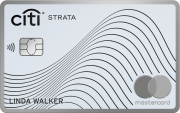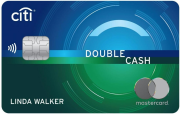The content on this page is accurate as of the posting date; however, some of the offers mentioned may have expired.

A credit limit on a card is quite a sensitive issue, somewhat shrouded in mystery. It's generally determined based on the personal information you provide, including your credit history, income, and the card you are interested in, among other factors, directly by the issuer.
While card issuers usually keep quiet about the maximum credit limits they can extend to customers, the average credit limit for top-tier credit cards tends to run from around $5,000 to $10,000 and can go up to $50,000-$80,000. If you have a steady income, a good to excellent credit history, and a high credit score, you're more likely to qualify for a high-limit credit card.
High-Limit Credit Cards for Good to Excellent Credit
Typically, rewards credit cards and premium cards that offer a lot of benefits come with potentially high spending limits. You can also look at Visa Infinite, Visa Signature or Mastercard World Elite-branded cards or cards with no preset spending limits.
The highest reported credit limit on the premium card is around $500,000. Although, the reporting lines of $50,000 to $80,000 seem more likely. You probably don't need a credit card limit of half a million, but it's good to know that you have access to such a sizable amount whenever you need it.
The prize winners for the highest credit limit among cards are Chase credit cards. The Chase Sapphire Preferred® Card and Chase Sapphire Reserve® are very impressive cards with a generous welcome bonus and earning rate. According to the card's terms and conditions, it starts out with a minimum credit limit of $5,000. The annual fees for these cards are in the high double and triple digits, though.
Frankly speaking, the cards with the most perks tend to charge higher annual fees overall. If you want to apply for a credit card with a high annual fee, make sure that the benefits will be worth it, and you'll be able to recoup the cost of membership.
Plenty of the best credit cards on the market may give you a high credit limit if you have a strong credit history and a high income. But even if you get a high-limit credit card, you're still better off keeping your credit utilization low and spending no more than 30% of your available credit. So, for example, if you have a $15,000 line of credit, it's better to spend no more than $4,500 to keep your credit score healthy. Or if you spend a lot on your card, paying your credit card more than once a month can help keep your credit utilization low.
Credit Cards with No Preset Spending Limits
With the cards that have no preset spending limit, the amount you can spend is flexible and based on your purchase, payment, and credit history. Unlike a traditional card with a set limit, these featured cards offer much higher spending limits. No preset spending limit credit cards are commonly charge cards, meaning the balance you charge on the card is due, in full, each month.
American Express has one of the best cards with no preset spending limit among the issuers. The Centurion® Card from American Express, also known as the Black Card, is generally recognized as the most exclusive credit card on the market, offering ultra-high credit limits, great perks, and some unique benefits. However, this card is not available to the general public. You can only become a cardholder by invitation, paying a staggering initiation and annual membership fees.
The Amex Platinum card is another prestigious card that you can get without needing an invitation and enjoy the best luxury travel benefits out there.
For most of us, having a credit card that offers unlimited spending isn't necessary. With a steady income and a good credit score, there is a good chance you can get a general credit card that suits your needs and the credit limit required.
High Limit Credit Card for Bad Credit
The best high limit credit card for bad credit is either a secured credit card or a credit builder account. In both cases, the possible credit limits will be lower than with a traditional credit card. However, if you manage to make a higher security deposit on a secured credit card, you can get a higher credit limit.
Many credit card issuers offer an upgrade from a secured credit card to an unsecured one, provided you've used your secured card responsibly. If you make on-time payments over the life of your account and keep your credit card balances low, a credit card issuer might offer to simply convert your secured credit card to an unsecured one and return your security deposit.
Request to Increase Your Credit Limit
You'll be lucky if you get the credit limit you wanted. But sometimes it might be less than you expected. Furthermore, if you have been using the card for a long time, you might outgrow your limit and need more purchasing power. So before applying for a new card, which can impact your credit score, you're better off asking a credit limit increase first.
If you've used your card responsibly for a certain amount of time, most credit card issuers may automatically increase your credit limit from time to time. You typically can request an increase once every six months.
If you are not satisfied with the approved amount, you can request a credit limit increase. The process is pretty straightforward. You can generally request a higher credit limit through an online bank or credit account, as well as over the phone. Kindly note that many issuers may pull an updated copy of your credit report, meaning they will perform a hard inquiry when you submit a request for a credit line increase.
If the increase is approved, you'll get a notice with your new credit limit. If you were denied, you'll have to wait until you can show that you use your card responsibly and try again later. You can usually request a credit line increase every 6 months.
Request a Credit Limit Reallocation
When you already have a credit card with the bank, the issuer may split your overall credit limit between the existing cards. If you plan to use one card more, you can request a change or reallocation of the limits on each card by contacting customer service.
For example, if your overall limit is $15,000, you could request to increase the limit on one card to $10,000 and reduce the other card's limit to $5,000.





